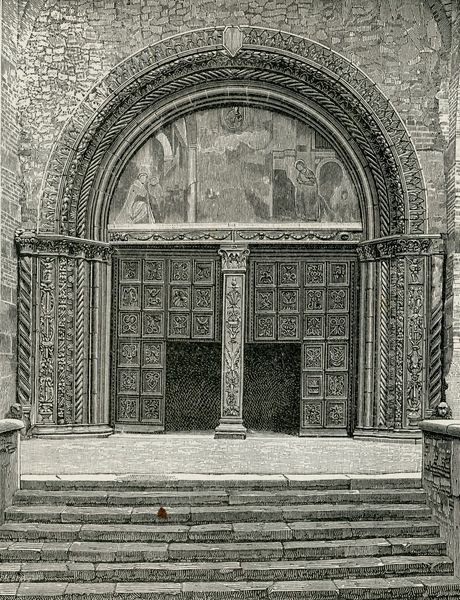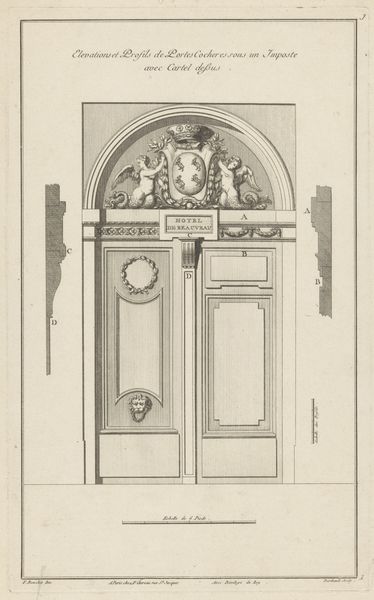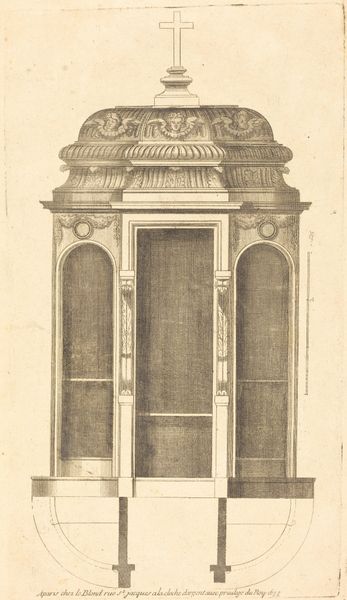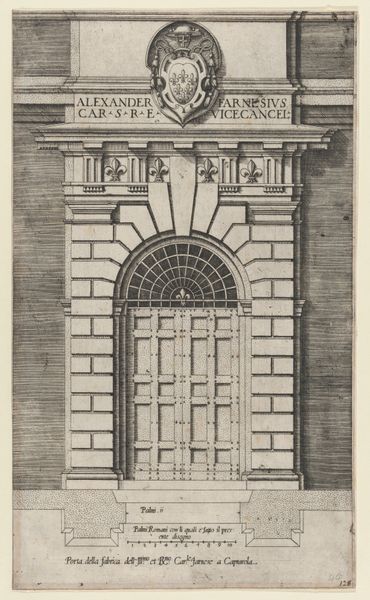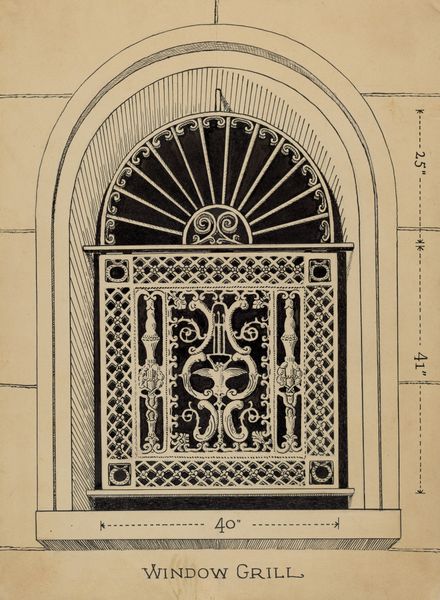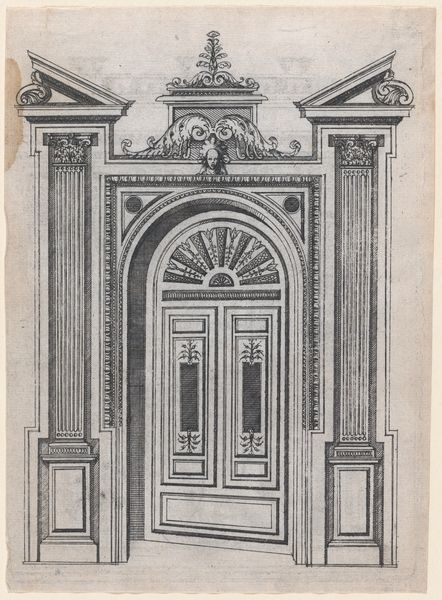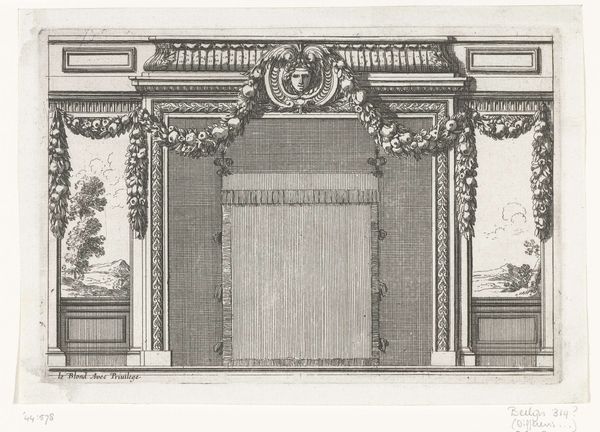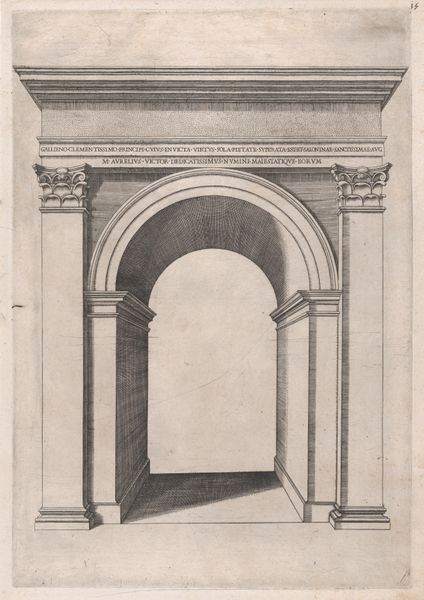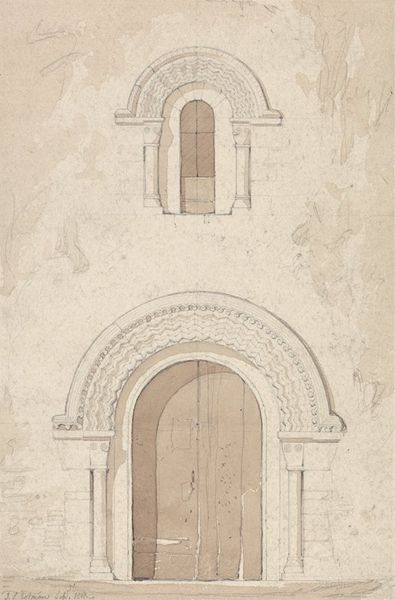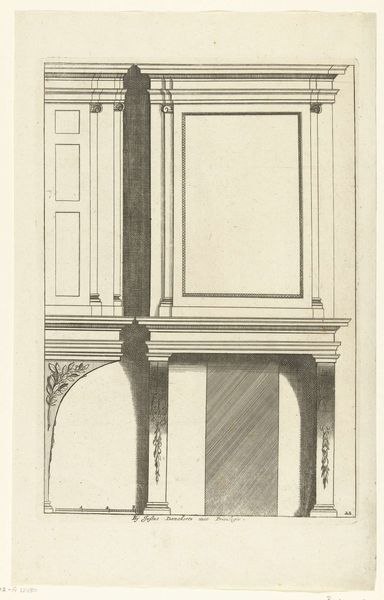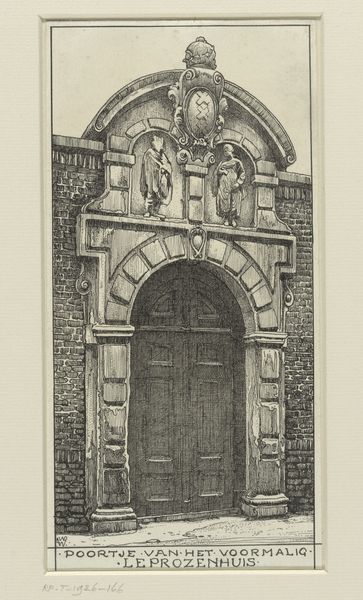
Copyright: Public domain
Curator: Giuseppe Barberis' 1897 engraving, "Porta Dell’archivio Notarile," presents a grand archival entrance. What's your first impression? Editor: It feels...imposing, yet static. The doorway’s half-open, beckoning slightly, but the sharp lines and ornamentation feel almost cold, detached. Like knowledge is heavily guarded here. Curator: That guarded feeling could come from the neoclassical style. Think of the precision required to translate architectural form into engraving. Notice how Barberis renders stone and wood textures—each line precisely placed. This engraving isn't just documentation, but an act of laborious craft, making readily available architectural styles to those unable to view in person. Editor: Absolutely, you can see the work etched in every stroke! And given it depicts an archive, think about the socio-political function. What labor goes into preserving the texts and objects safeguarded within the archive and rendered available? This artwork embodies the convergence of archival practices and labor-intensive printing processes. How the image will itself likely be archived. Curator: Which speaks to the nature of memory itself! The doorway almost becomes a mouth, ready to swallow you into history. See those faces above the arch? I like to imagine those are the keepers of memory. It also makes me think, are archives built to truly keep information alive and readily accessible? I mean...really? Editor: Interesting thought, but what stories is it preserving and whose labor is exploited by keeping these historical accounts alive? Even Barberis' act of documenting this grand doorway has embedded himself into that ongoing material, social and historical process. Curator: True. Barberis transforms architecture into a tactile experience. And now with AI assistance to the historically laborious research process! It adds yet another layer to our reflection. Editor: Indeed. The materiality and labor inherent in its making offer potent avenues for thought and, to Barberis's point, its preservation for future generations.
Comments
No comments
Be the first to comment and join the conversation on the ultimate creative platform.
